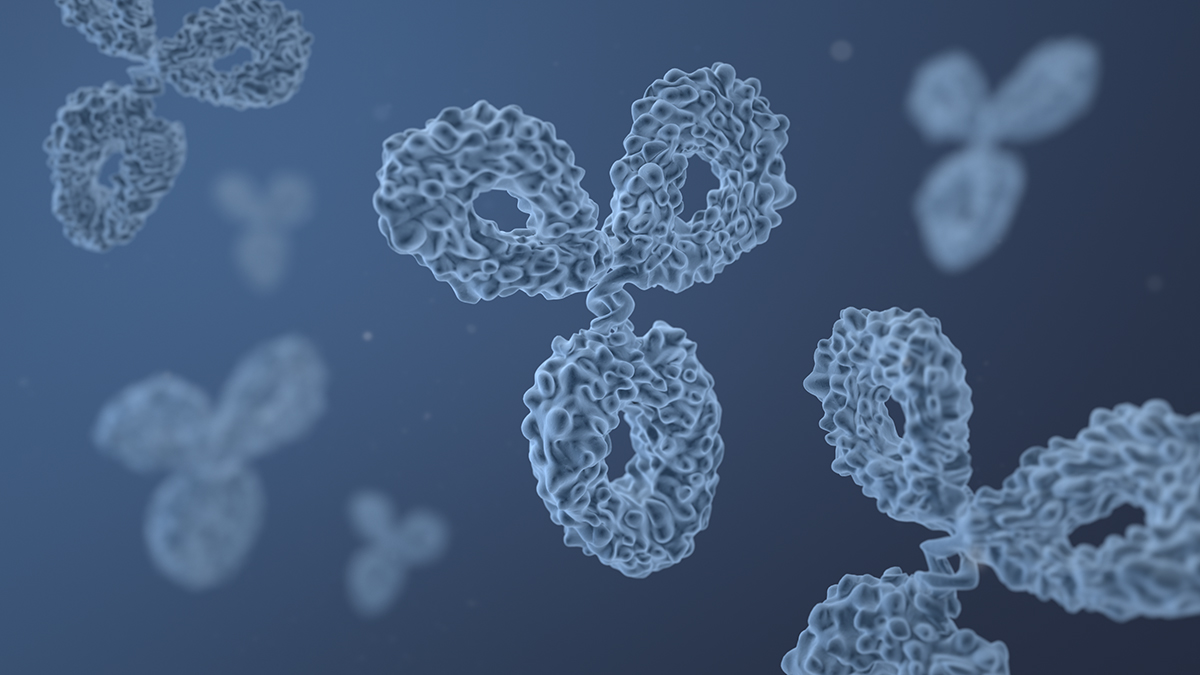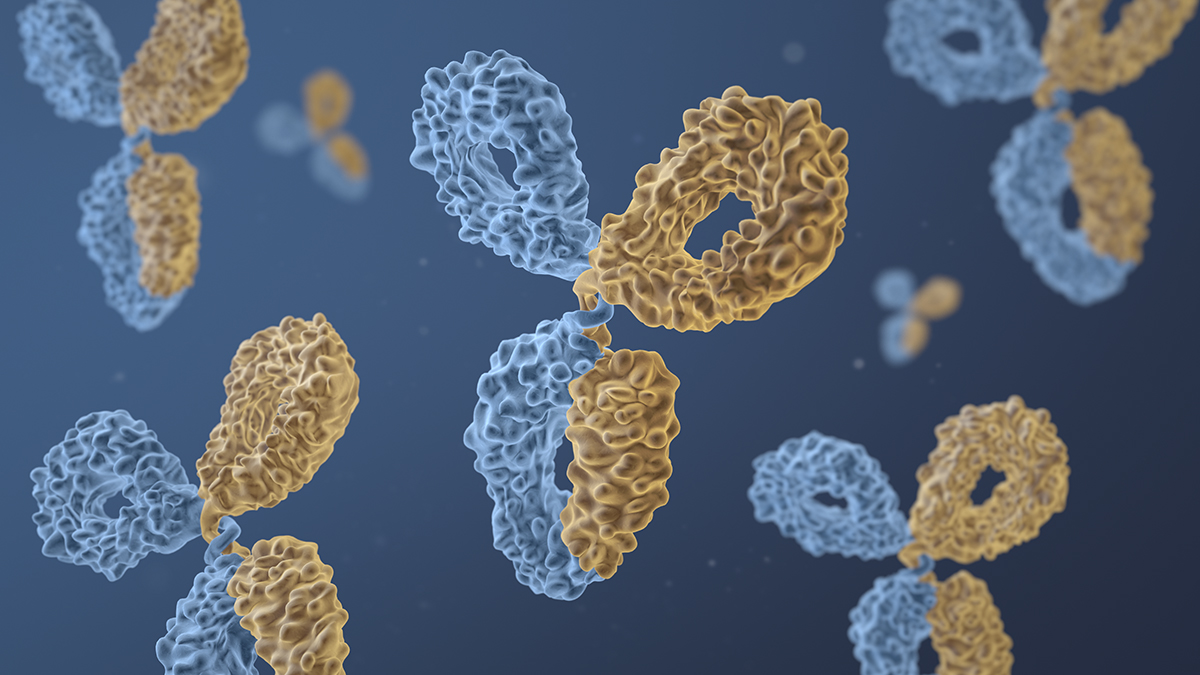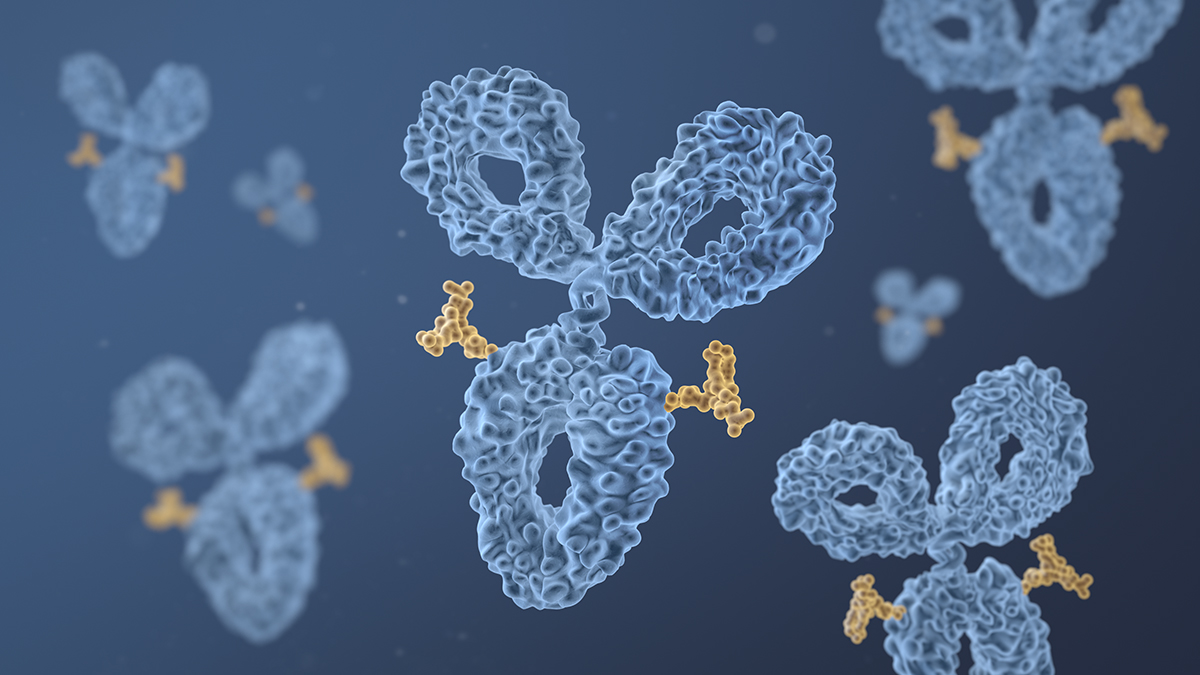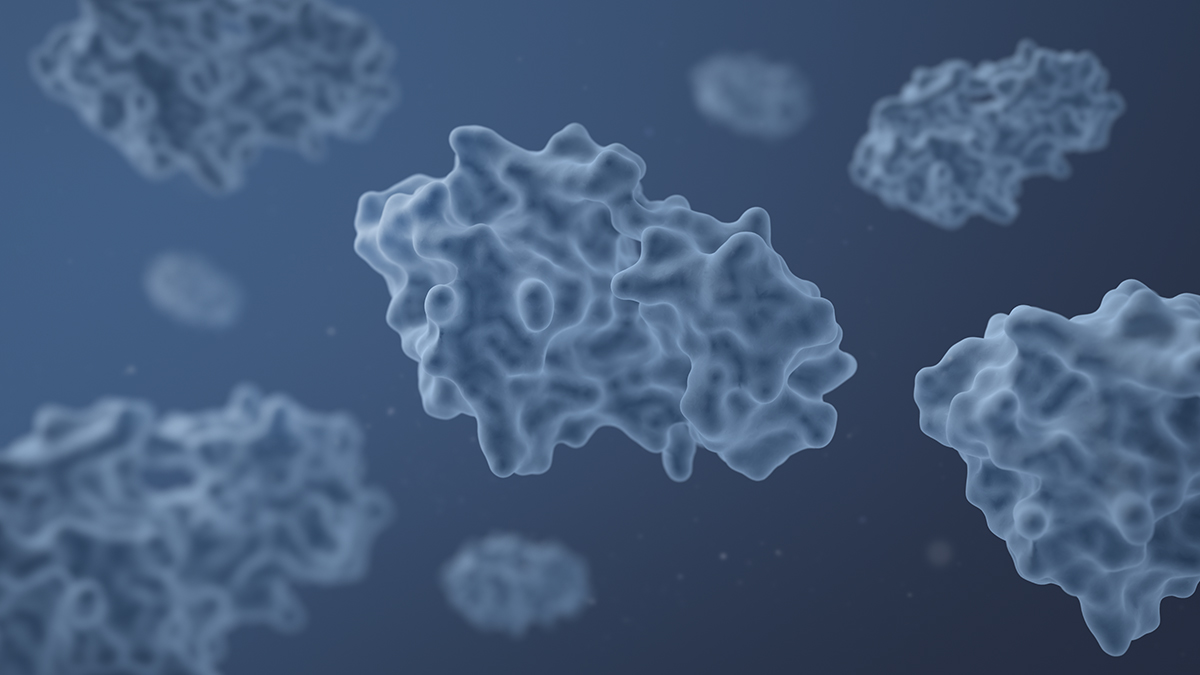Mechanistic modeling of chromatography is not just applicable for mAbs. It also applies to bispecific antibodies, ADC, peptides, and more.
There is an ever-growing range of new innovative biomolecules being developed, which require different production processes. The increasing complexity and diversity of development pipelines also poses new challenges for product manufacturing. Mechanistic modeling can play a key role in overcoming these challenges as they are not limited to a certain class of biomolecules but are broadly applicable. Depending on the specific molecule and the manufacturing process used, different modeling strategies may be required.
Using mechanistic models in monoclonal antibody production
Today, the biopharmaceutical market is still dominated by monoclonal antibodies (mAbs). The structural similarity of pharmaceutical mAbs has led to the development of platform processes. A platform process is a production process suitable for the manufacturing of a group of related products enabling rapid and cost-effective process development. Platform processes enable process understanding to be generated rapidly, as many products use the same process. Process understanding acquired with one product can then be used for similar products. Also, the risk associated with developing a completely new process is decreased.
Mechanistic process models can support process transfer activities as they are applicable across all scales. They describe the behavior of the process as a function of system parameters, e.g., the dimension of a chromatography column or its packing quality. Differences in scale can therefore be mimicked by the mechanistic model, and how these differences affect process behavior can be investigated. By doing so, they can also be used early on to investigate whether a process fits into an existing production facility. This can be important for flexible production, multi-product facilities, or a smooth transition to continuous processing.
However, each molecule comes with individual product-related impurities like aggregates and charge variants, as well as process-related impurities such as host cell proteins (HCP) and DNA. Platform processes are therefore not completely rigid. Their process parameters still need to be optimized for each product and process conditions need to be validated for robustness. This procedure is based on extensive use of experiments which makes process development time-consuming and costly.
Additionally, more and more new modalities have been developed in recent years as an alternative to natural mAbs. Many of these new modalities are non-platform molecules which cannot be covered by classical platform processes and require additional development effort.
Downstream simulation of monoclonal antibodies
Simulating the commonly used downstream processes of a mAb platform, such as protein A, ion-exchange, mixed-mode, and hydrophobic interaction chromatography, is very much possible. The accuracy of simulating product size and charge heterogeneity, as well as HCP, DNA, and leached protein A, is only limited by the data quality of the company-specific analytical assays.
Visualization of a monoclonal antibody
Process understanding for bispecific antibodies using mechanistic models
With the current biopharmaceutical market dominated by antibody platforms, multi-specific antibodies and especially bispecific antibodies (bsAbs) represent key components of next-generation antibody therapies. In contrast to natural antibodies, bsAbs can target two different antigens at the same time, allowing more tailored immunogenic targeting. However, unlike conventional monoclonal antibodies, greater production challenges arise with respect to product quality.
While the purification of mAbs can be streamlined by using platform approaches, the downstream processing of bsAbs is not always as straightforward. Due to the inherent diversity of this class of molecules, different bsAbs need different purification solutions, hampering the development of a platform approach.
Apart from the lack of a platform process, product-related impurities present an even larger problem for bsAbs in comparison to natural mAbs. In addition to the desired heterodimerization of heavy chains, multiple product-related impurities like homodimer forms can be formed during product expression. This results in a lower yield for the molecule of interest and increased effort to achieve the required product quality.
Mechanistic modeling can help to decrease the experimental effort during the process development of bsAbs and to find robust process conditions to consistently achieve the required product quality. In addition to the species modeled for a natural mAb, the different homo- and heterodimers and other multimers can be modeled explicitly. The increased process understanding provided by mechanistic models can also help to find synergies between bsAbs, which can help lead to the development of platform processes for this type of new modality.
Visualization of a bispecific antibody
In silico process development for antibody drug conjugates (ADCs)
ADCs combine the advantage of the selectivity of a mAb with the potent cell-killing activity of a small cytotoxic molecule. They can provide high selectivity, safety and efficacy. One important property of an ADC is the drug-to-antibody ratio (DAR), which is the average number of drug molecules conjugated to the mAbs. It is a critical quality attribute affecting the pharmacokinetics, efficacy, and safety of the product.
Initially, the DAR is a result of molecular engineering and the conjugation reaction, where the drug molecules are covalently attached to the mAb via a hydrophobic linker. Depending on the conjugation strategy, the reaction leads to a rather broad or narrow distribution of components with different drug loading. To achieve a predefined and narrow DAR in the final drug substance, a robust combination of molecular engineering, conjugation, and subsequent purification is mandatory.
Downstream processing (DSP) is commonly used to remove ADCs with an unfavorable DAR, as well as the unconjugated payload. Due to the hydrophobic properties of the payload-linker-conjugate, hydrophobic interaction chromatography (HIC) is frequently used. Variations in DAR after the conjugation can therefore be corrected by DSP.
However, to achieve this goal, the downstream process needs to be well-understood. Finding robust operating conditions in DSP development can be challenging and requires significant experimental effort. As handling ADCs is associated with a higher risk for the workforce, replacing lab experiments with computer simulations comes with an increased safety at work.
Establishing mechanistic models for ADC processes leads to more efficient process development, optimization and a higher process robustness. In addition to the species modeled for a mAb, ADC species with different DAR as well as the unconjugated payload can be modeled explicitly.
Visualization of an antibody drug conjugate
Mechanistic process models for peptides, proteins, and enzymes
The variety of peptides, proteins and enzymes for therapeutic applications range from small peptides and hormones to proteins such as insulin, erythropoietin, blood factors, and enzyme replacement therapies. The major drawback of these classes of molecules compared to, for example antibodies, is their molecular diversity. This requires that discovery, design, and manufacturing processes must be developed on a case-by-case basis which come with a significantly higher risk of failure. In downstream processing, some of the main differences to antibody processes are the lack of platform knowledge, the absence of an affinity capture, the comparably low product concentrations, and sometimes increased instability of the molecules.
Using a mechanistic process model for downstream processing compensates for most of those drawbacks and model-based process development workflows from the antibody world can be applied. The mechanistic process simulation accounts, of course, for the low abundance of proteins in a feedstock, simply being limited by the analytical assays of a company.
Developing non-affinity capture chromatography is probably one of the most complex DSP tasks, and the related skills have not been widely practiced over the last couple of decades as the focus was mostly on antibodies. Mechanistic models allow a highly efficient development of non-affinity capture processes, as well as optimizing these processes to handle a variable feedstock coming from the bioreactor. Filtration models originally developed for mAbs can also be used to support the development of filtration processes for these proteins.
Visualization of a protein
Faster biosimilar development through in silico models
The market entry of generic molecules with lower prices after patent expiry is a well-known phenomenon for small pharmaceuticals. As the development and manufacture of completely identical biomolecules by another company is not possible, generic versions of biopharmaceuticals are called biosimilars or biobetters. Biosimilars are highly similar to an already licensed biological product, showing no meaningful differences in purity, potency, and safety when compared with the originator product.
Developing biosimilars is associated with numerous challenges, including the proprietary nature of the manufacturing process of the reference product and the need to demonstrate product similarity. As the goal of a biosimilar is to provide a cheaper alternative to the innovative reference product, there is also a higher cost pressure on pharmaceutical companies and costs for biosimilar manufacturing therefore becomes more important. The process development of biosimilars is usually an iterative process to select the process configuration that will deliver target product quality attributes similar to those of the reference product.
This task becomes non-trivial for biological products as they typically possess several quality attributes like charge variants and glycosylation variants that are affected by numerous process parameters and raw material attributes.
The focus of ensuing biosimilarity lies on molecular and cell line engineering as well as upstream processing. Although it is well known that the patterns of product-related impurities and product variants can be modulated with downstream processing, it is commonly neglected simply because it would be too complex when executed experimentally.
With a mechanistic process model, developing such a sophisticated downstream process is not more challenging than any other PD task. The model can simplify and streamline the process development of biosimilars as they describe the relationship between product quality attributes, process parameters, and material attributes. They can be used to identify process conditions that consistently achieve the desired product quality profile of the reference product without the need for elaborate experimental studies.
Visualization of antibody biosimilars
Downstream simulation of vaccines and virus-like particles
Virus-like particles (VLPs) are an effective complement to traditional vaccines against infectious pathogens. In addition, VLPs are key to some of the most promising gene therapies and CAR-T cell therapies. VLPs assembled from capsid proteins can serve as delivery vectors for genes or other therapeutics.
Despite their therapeutic potential, there are still technical challenges in the manufacturing of VLPs, in particular product purification. The presence of the host cell-derived membrane of VLPs provides the possibility to integrate antigens and adjuvants but, at the same time, poses challenges for downstream process development due to the existence of multiple undesired process-related contaminants. They are predominantly attributed to host cell impurities such as cell debris, host cell proteins, DNA, and lipids. Developing a purification process that safely removes these process-related impurities can be very complicated. Depending on the application, the separation of empty/full VLPs is a critical element of downstream processing.
Although the underlying theory of mechanistic chromatography simulation was originally developed for protein separations, it has been successfully applied to industrial VLP and vaccine purification as well. Like the modeling workflow for product heterogeneity of therapeutic proteins and antibodies, the different VLP variants are simulated as separate species. For example, empty/full separation are possible as the encapsulated DNA alters the surface charge of the VLP.
Finally, mechanistic modeling can be applied in the same way as for other biomolecules to reduce the experimental effort in process development and find robust process conditions to maximize product purity and yield.
Visualization of virus like particles
Downstream process simulation of nucleic acids
Nucleic acids such as DNA and RNA are the most disruptive class of biomolecules for pharmaceutical applications. From a patient perspective, gene therapies based on nucleic acids promise to cure serious diseases instead of temporarily restoring a healthy condition. From an industrial perspective, nucleic acid based therapies can be engineered and produced quickly allowing the implementation of industrial concepts such as rapid prototyping. As the synthesis of nucleic acids can be easily scaled down, personalized therapies become feasible.
Techniques to produce DNA and RNA for research purposes have also been established for decades, but when it comes to industrial production, the development of safe and efficient processes is still an ongoing task. Safety measures, e.g., to ensure a homogenous and well-defined product, are even more important compared to protein therapeutics, as nucleic acids potentially integrate into the patient’s genome and negative side effects might last for the patient’s entire life.
Although the underlying theory of mechanistic chromatography simulation was originally developed for protein separations and has been frequently used to simulate nucleic acids only as trace impurities, accounting for plasmid DNA or RNA as a bulk component is possible as well. Typical model applications for nucleic acid are the separation of different plasmid conformations or sequence variations.
Visualization of nucleic acids/DNA






